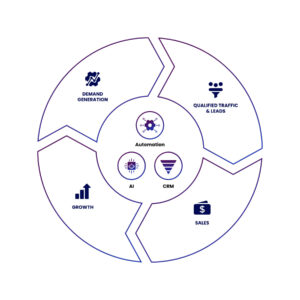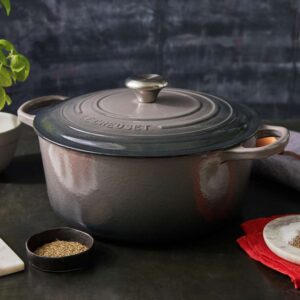As pet owners become more conscious about their furry companions’ health, the demand for specialized nutrition has soared. One of the most widely discussed trends in canine diets is grain free dog food. Marketed as a healthier, more natural option, it claims to offer benefits like improved digestion, better skin and coat health, and fewer allergies.
But what exactly is grain-free dog food? Is it genuinely beneficial, or just a marketing buzzword? In this article, we’ll explore everything you need to know about grain-free diets, including benefits, risks, ingredients, and how to choose the right formula for your dog.
What Is Grain Free Dog Food?
Grain free dog food is a type of pet food formulated without any grains such as:
-
Wheat
-
Corn
-
Barley
-
Rye
-
Oats
-
Rice
Instead, these foods often use alternative carbohydrate sources like:
-
Sweet potatoes
-
Peas
-
Lentils
-
Chickpeas
-
Tapioca
The idea is to mimic a more ancestral canine diet, which consisted mainly of protein, fat, and limited carbohydrates — with no grains.
Why Do Pet Owners Choose Grain Free Dog Food?
There are several reasons why dog owners may opt for a grain-free formula:
✅ 1. Food Sensitivities or Allergies
Some dogs show allergic reactions to common grains like wheat and corn. Symptoms may include itching, gastrointestinal upset, and skin infections. Switching to grain-free food often helps eliminate those triggers.
✅ 2. Improved Digestion
Grain-free diets can be easier to digest for some dogs. This is especially true for breeds with sensitive stomachs or a history of digestive problems.
✅ 3. Healthier Skin and Coat
Many grain-free formulas are rich in omega-3 fatty acids, which support a shiny coat and reduce inflammation. This can help with conditions like dry skin, dandruff, and itchiness.
✅ 4. Weight Control
Some grain-free options are higher in protein and lower in carbohydrates, which may aid in weight management and maintaining lean muscle mass.
✅ 5. Mimics Ancestral Diet
Supporters believe dogs thrive on a diet similar to their wolf ancestors, which consisted mainly of meat and no grains.
Common Ingredients in Grain Free Dog Food
Instead of grains, these formulas typically use:
| Ingredient | Nutritional Role |
|---|---|
| Sweet Potatoes | Source of fiber and complex carbs |
| Peas and Lentils | Plant-based protein and fiber |
| Chickpeas | Carbs, fiber, and minerals |
| Tapioca | Digestible carbohydrate for energy |
| Meat/Fish Meals | Main protein source (chicken, salmon, etc.) |
| Flaxseed | Omega-3s and fiber |
| Coconut Oil | Healthy fats and energy |
Always check the label for meat as the first ingredient, as some cheaper grain-free brands load up on plant protein.
Grain Free vs. Gluten Free: Know the Difference
Grain free means no grains at all, while gluten free refers only to the absence of gluten-containing grains (like wheat, rye, and barley). A gluten-free food may still contain grains like rice or corn. Grain-free food, on the other hand, avoids all grains entirely.
Potential Risks or Concerns
While grain-free diets have gained popularity, they are not without controversy:
⚠️ 1. FDA Investigation and DCM
In 2018, the FDA began investigating a potential link between grain-free diets and canine dilated cardiomyopathy (DCM) — a heart condition. Some reports suggested that legumes (common grain substitutes) could be interfering with taurine absorption, an amino acid important for heart health.
Important Note: The science is still inconclusive. Most veterinarians recommend choosing a grain-free food backed by scientific research and formulated by a veterinary nutritionist.
⚠️ 2. Overreliance on Plant Protein
Some cheaper grain-free foods replace grains with high amounts of peas, lentils, or potatoes. While these provide protein, they may lack amino acid balance compared to meat-based proteins.
⚠️ 3. Not Necessary for All Dogs
If your dog has no grain allergy or sensitivity, there may be no need to go grain-free. In fact, whole grains like brown rice or oatmeal offer beneficial nutrients.
When Is Grain Free Dog Food a Good Choice?
Grain-free diets are especially beneficial if:
-
Your dog has confirmed grain allergies or sensitivities
-
They suffer from skin issues or recurring ear infections
-
They have chronic digestive problems
-
You prefer a high-protein, low-carb diet for your dog
-
Your vet recommends it based on your dog’s health status
Always consult your veterinarian before switching diets, especially for breeds prone to heart disease.
Top Grain Free Dog Food Brands (2025)
Here are some highly rated, vet-recommended grain-free options:
-
Orijen Grain-Free Dog Food
-
High in protein (85% animal ingredients)
-
No legumes or unnecessary fillers
-
-
Acana Singles + Wholesome Grains (limited ingredients)
-
Great for dogs with food sensitivities
-
-
Blue Buffalo Wilderness Grain-Free
-
Rich in antioxidants, chicken or salmon as main ingredient
-
-
Wellness CORE Grain-Free
-
Includes glucosamine for joint health
-
-
Taste of the Wild Grain-Free
-
Affordable, balanced with novel proteins like bison or venison
-
How to Transition to Grain Free Dog Food
If switching your dog’s diet, do it gradually to avoid stomach upset:
| Day | Old Food | New Food (Grain-Free) |
|---|---|---|
| Days 1–3 | 75% | 25% |
| Days 4–6 | 50% | 50% |
| Days 7–9 | 25% | 75% |
| Day 10+ | 0% | 100% |
Look for signs of success:
-
Better stool consistency
-
Shinier coat
-
More energy
-
Less itching or paw licking
If symptoms worsen, consult your vet immediately.
Grain Free for Puppies, Seniors, and Special Needs
Grain-free foods are available for all life stages, but make sure the formula matches your dog’s specific needs:
-
Puppies: High-calorie and DHA-enriched formulas for brain development
-
Seniors: Lower fat, joint-supporting ingredients
-
Weight Management: Low-carb versions for overweight dogs
-
Allergy Relief: Limited-ingredient grain-free diets
Conclusion
Grain-free dog food can be an excellent solution for dogs with allergies, digestive issues, or owners looking for a high-protein, ancestral-style diet. However, it’s not a universal solution. Understanding your dog’s specific nutritional needs — with help from your vet — is key to choosing the best food.
Look for quality ingredients, proper protein sources, and scientific backing. When chosen carefully, grain free dog food can support your dog’s energy, skin, digestion, and overall well-being for years to come.




